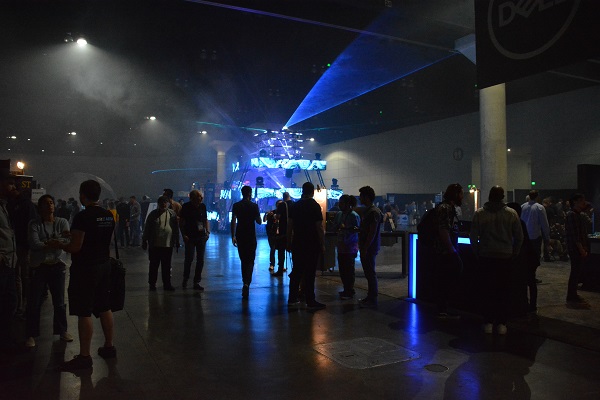by Dot Cannon
At Day Two of VRLA 2018 on Saturday, attendees fell into a black hole.
And that was just one of many “Wow!”-inducing experiences at the Los Angeles Convention Center, during the world’s largest immersive technology festival.
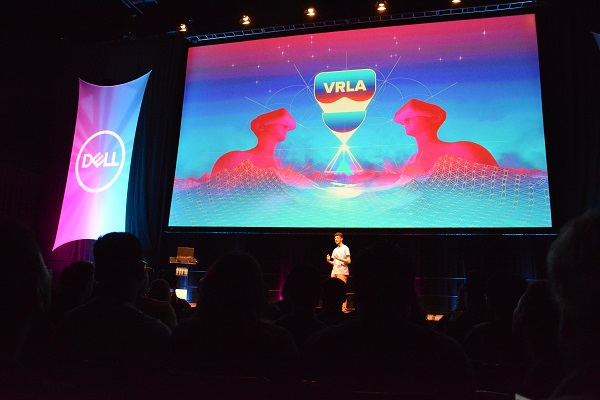
The day started with a keynote by VRLA co-founder Cosmo Scharf. His comments amounted to a challenge, both to himself and the audience.
“It’s easy to forget that VR can only exist as long as our planet is healthy,” he said, referencing the hit movie Ready Player One. “Avoiding the future portrayed in this movie will require giving up our addiction to war.”
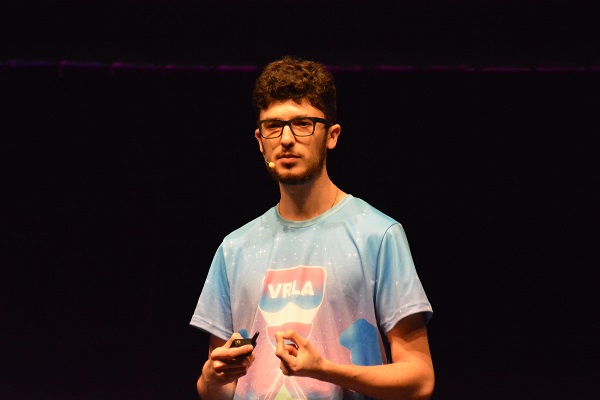
That war, Scharf continued, existed on several levels: “War on the EPA, our failed war on drugs, (childhood poverty and our pharmaceutical industry’s emphasis on profit).”
“What if all these seemingly disparate wars are actually just one: a war on consciousness?” he asked, “We forget that (the world) is a manifestation of our values.”
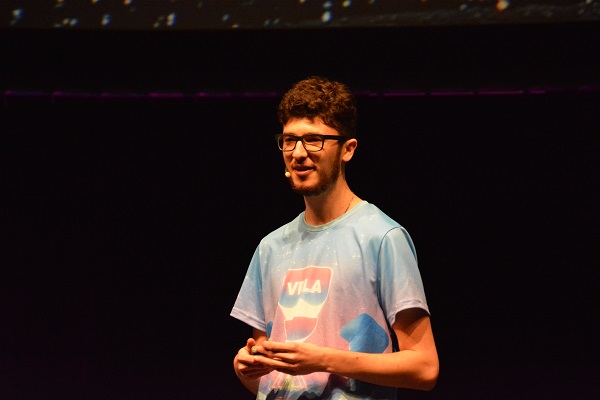
“In a world consciousness, surely VR must have some value we can apply to (life) outside the headset.”
Storytelling: the core element
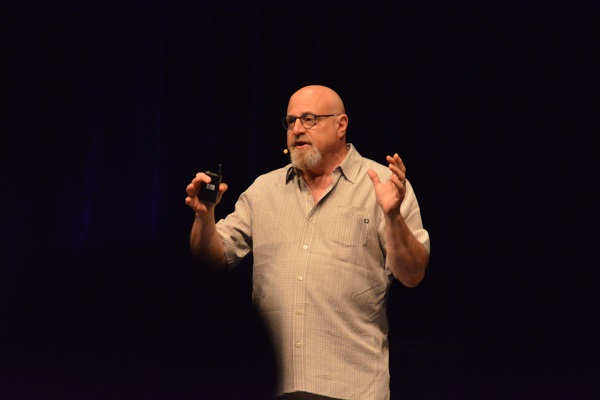
Author, producer and futurist Charlie Fink echoed that challenge in his remarks.
“Technology succeeds when it takes what we’re already doing and makes it better,” he said. Storytelling, he said, was the key.
“VR comes out of the tradition of cave paintings and campfire stories…(churches in the Middle Ages)…theatre and dark rides,” he explained. “Man’s quest for immersion (is the core of VR).”
Fink, whose thirty years’ experience in the entertainment industry include working for Disney, Virtual World Entertainment and AG Interactive, then explored the ways he foresees augmented reality integrated into the world.
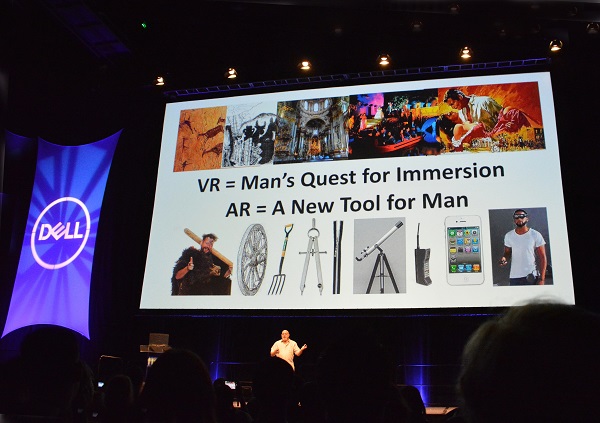
“Where we’re really going, is a computer that sees the world. A universal visual browser, if you will,” he explained.
Fink outlined the ways that “browser” might work. At sports games, for example, player information could display over each participant. City information could appear on buildings.
“But we’ll need a system of filters,” he continued. “Otherwise everything will be talking to you all at once.”
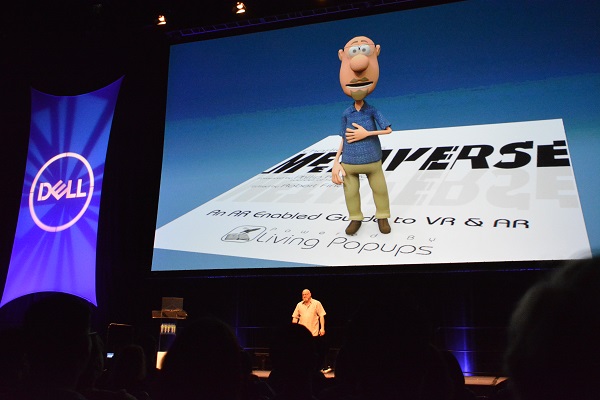
One intriguing form of current AR integration? Fink’s new book, Metaverse, An AR Enabled Guide to VR & AR, which includes AR animated scenes…
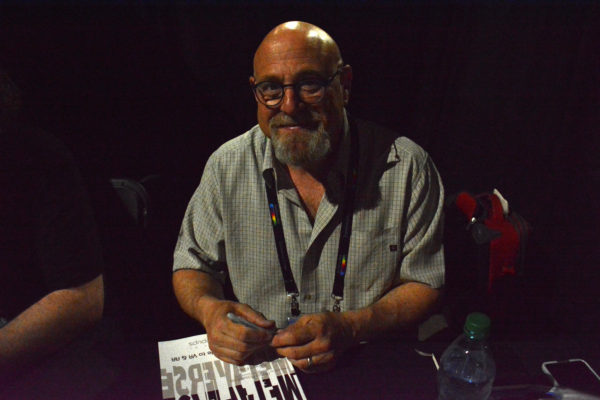
…and copies of which he would sign, on the show floor, after the exhibits opened at noon.
Other highlights of the morning presentation included Intel’s announcement of a new. educational partnership with the Smithsonian American Art Museum.
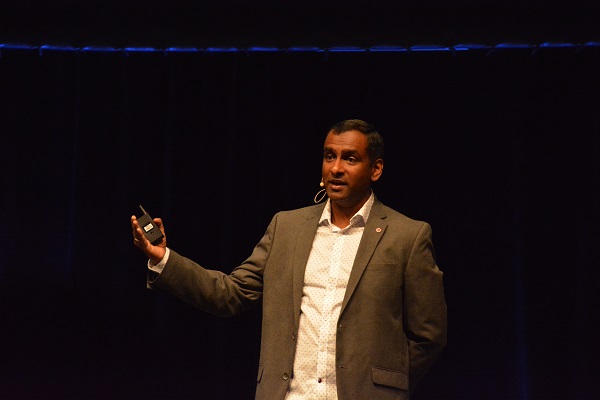
“We think, working with organizations like Smithsonian, we are going to impact the way kids learn,” said Intel Virtual Reality/Augmented Reality General Manager Kumar Kaushik, during his presentation.
The new partnership, he said, would allow art enthusiasts to access immersive art experiences from anywhere. The new virtual-reality capability would vastly improve access to museum pieces.
“The largest museums currently display only about five percent of their collections,” Kaushik explained. (The first VR-accessible installation, he told the audience, will be art from the Burning Man Festival!)
AR, VR and creativity
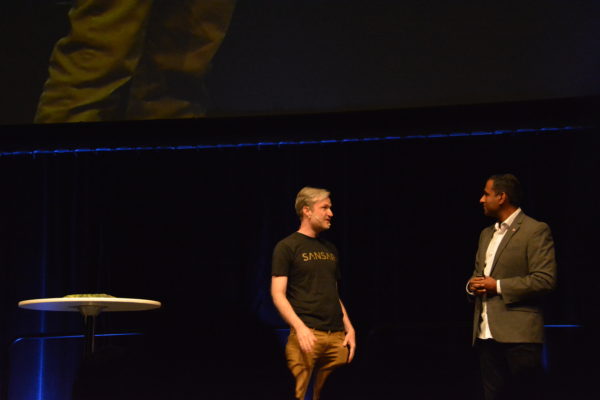
Kaushik introduced Sansar Studios head Jason Gholston onstage. Both prepared for an augmented-reality video call with Nora Atkinson, Curator of Craft at the Smithsonian’s Renwick Gallery in Washington, D.C.
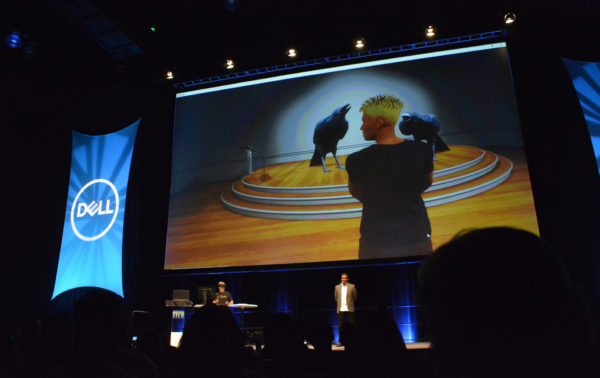
Sadly, though, the technology behaved like–well, like technology. The audio refused to play.
“As these things go, the demo gods have decided to curse our sound card at this time,” joked Kaushik.
Lack of sound, though, did not prevent Gholston and Kaushik from giving the audience a close, augmented-reality look at some of the sculpture. “Up close, you can really see a lot of the sculptural details,” Kaushik commented as the camera zoomed in.
The story of “Spheres”
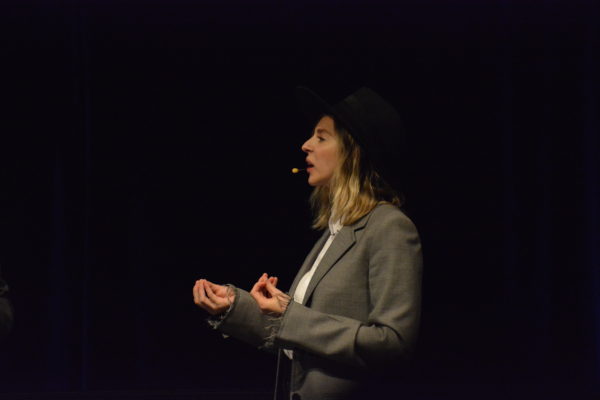
VR filmmaker Eliza McNitt approached the no-audio challenge with equal equanimity and creativity.
McNitt is the creator of the VR movie Spheres: Songs of Spacetime, which is the first VR film to be acquired by a studio in a major seven-figure deal.
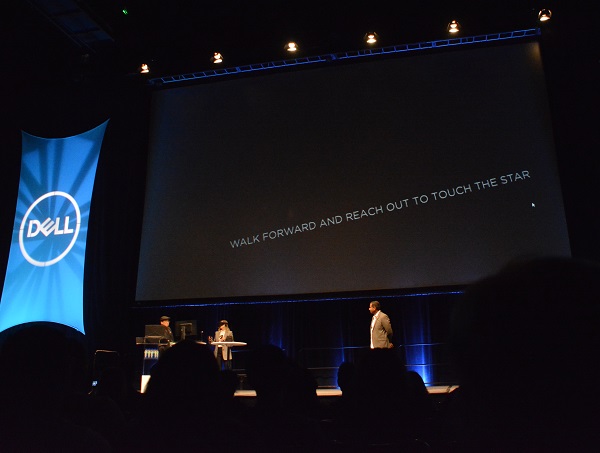
“What you aren’t hearing, is a beautiful score by Karl Dixon and Michael Stein, who are the composers of ‘Stranger Things’,” she said, playing a short clip of her film. She also offered a brief narrative of what the audience saw.
“That was my best Jessica Chastain impression,” she said.
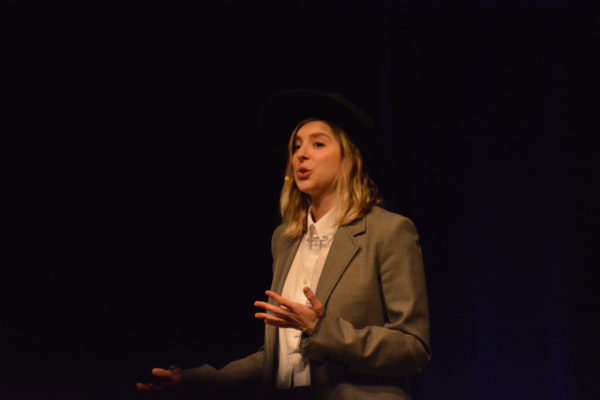
McNitt talked about the experience of creating Spheres: Songs of Spacetime.
“I wanted to tell the story of the music of the cosmos, and show that science is storytelling,” she explained. “(We wanted to craft) a realistic image of what it would be like, to fall into a black hole. And so we worked with scientists, to (create that).”
The experience of falling into that black hole would be available to VRLA 2018 attendees on the expo floor.
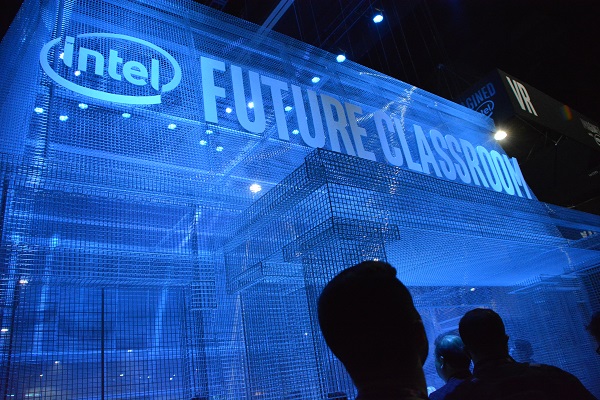
Stepping into Intel’s ” Future Classroom”, attendees could interact by”touching the star” that was coming closer and closer.
We really don’t want to do “spoilers” here (which certainly wouldn’t do justice to the experience anyway!). However, imagine being inside a combination of a kaleidoscope, a soap bubble and galaxies, with stars all around you. At certain points, you interact with what you see, through multicolored glowing balls of light.
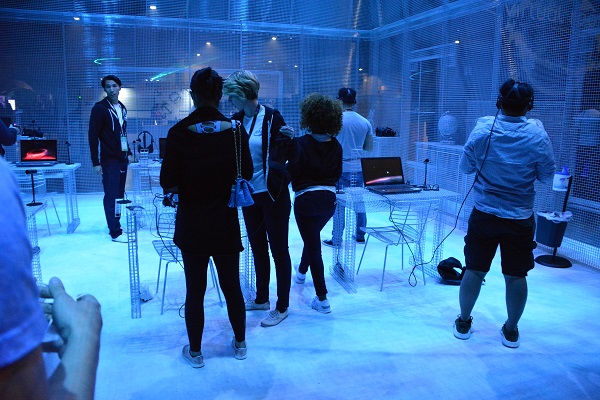
And the sense of “falling”, at least for this reporter, happens without vertigo and is amazing.
Experiences everywhere
Like any great conference, VRLA 2018 offered more than any one attendee could experience.
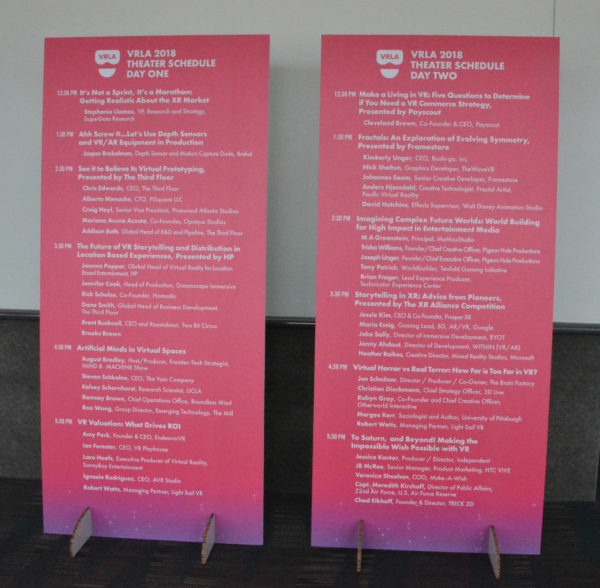
Both the Dell Theatre and VRLA Theatre offered panels, workshops and presentations throughout the day.
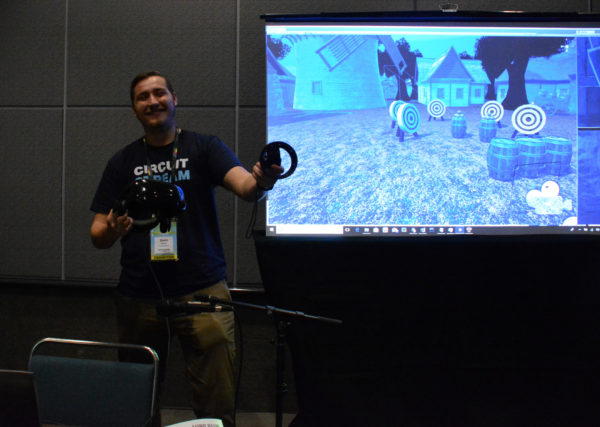
Unity teaching sessions, courtesy of Circuit Stream, were happening all afternoon.
And, on the expo floor…
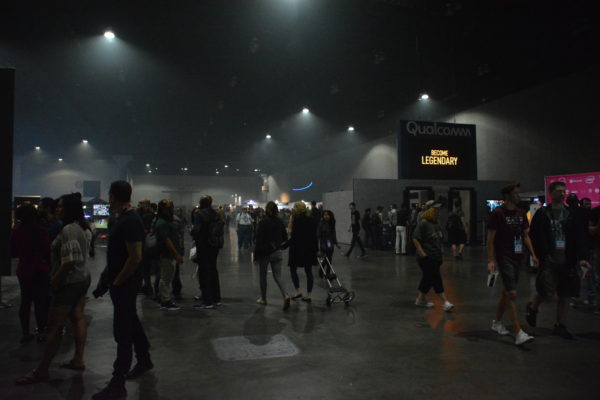
Activity on all levels
Lines were epic for the aforementioned Intel Future Classroom, as well as the debut of Red Frog Digital’s “ZombieHoloMaze”.
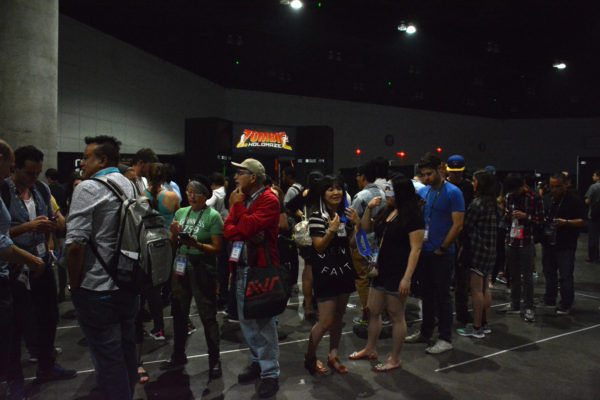
This experience, according to a press release, transports attendees to a tumbledown penitentiary. This escape room, according to its press release, it traps the visitor inside, with limited time to find an antidote or forever join the zombie inmates.
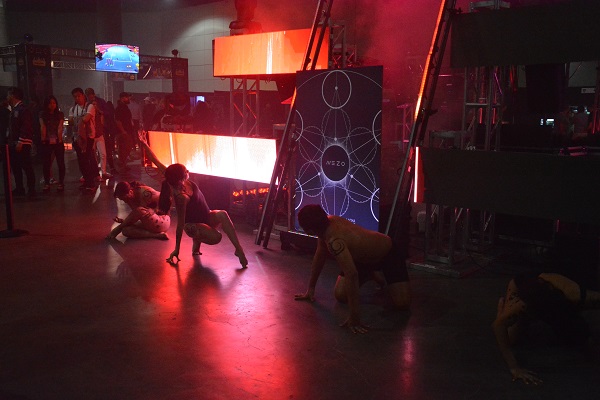
Lines were similarly long for “Mezo”, the centerpiece of VRLA 2018’s expo show floor.
According to VRLA press release, this is an interactive art installation, created in collaboration with LACMA.
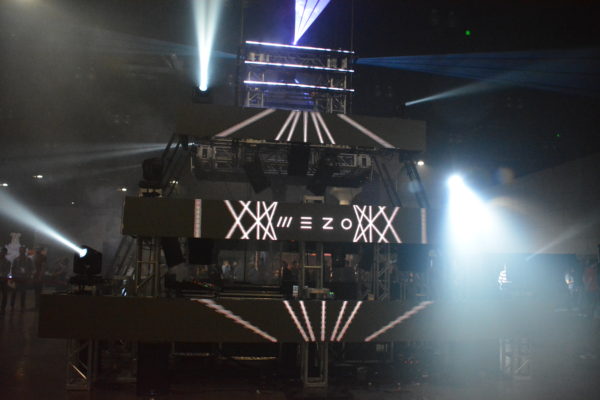
It’s a 20-foot pyramid, where, through Mesoamerican-styled dance, performers explored the cycle of destruction and rebirth in a cyborg Amazon forest.
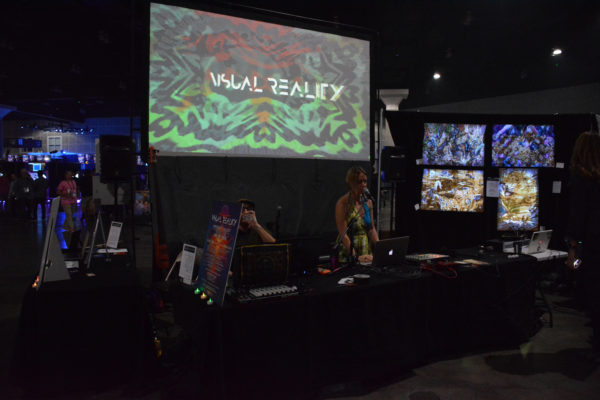
In other areas on the expo floor, attendees could be transported for a VR-enhanced meditation session…
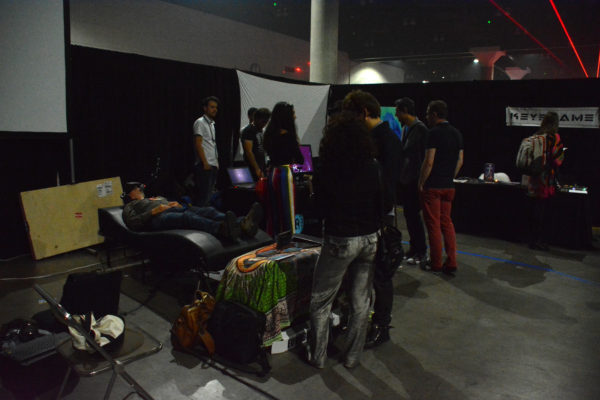
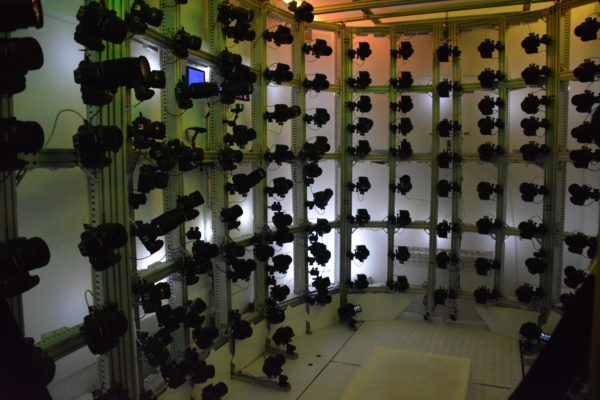
…check out the mobile “Scan Truck”, with its 206 cameras for AR modeling…
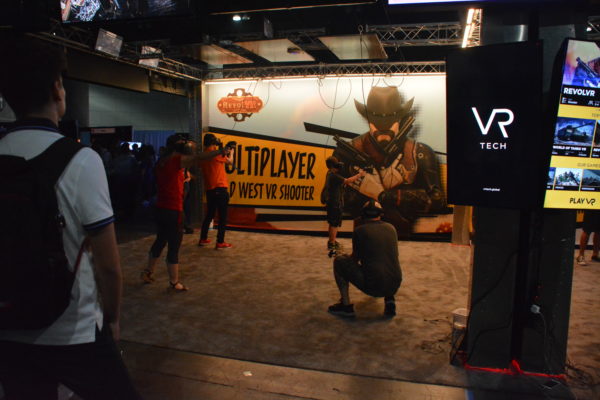
…or indulge in some good old-fashioned Wild West gunplay.
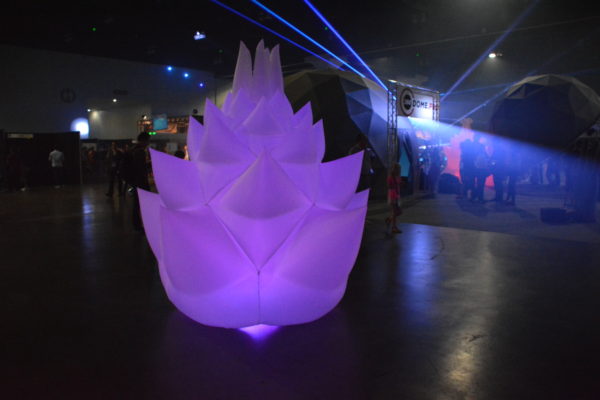
This reporter’s personal experience, at VRLA 2018?
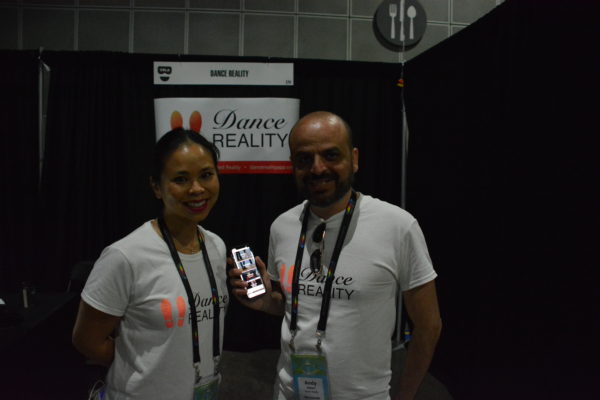
Well, it included working on salsa steps;
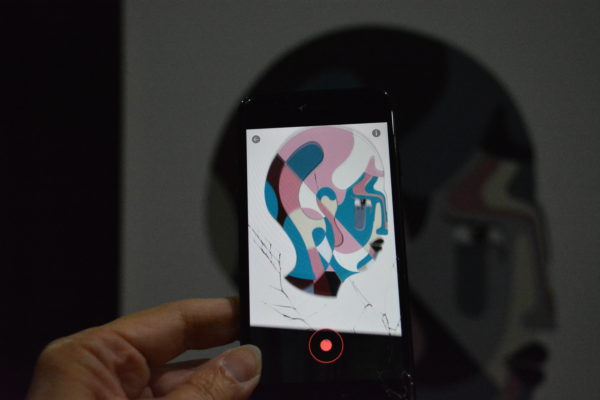
investigating AR-enhanced art;
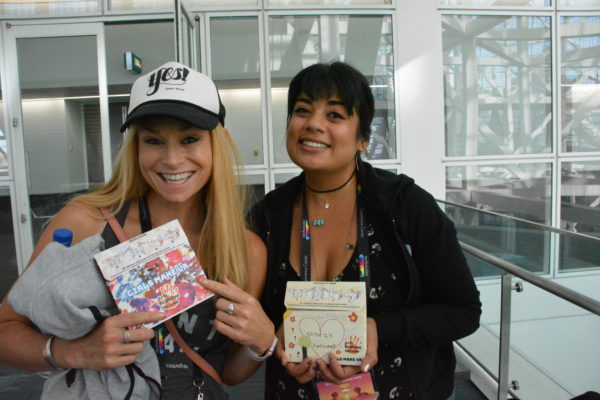
talking with the amazing creators of Girls Make VR;
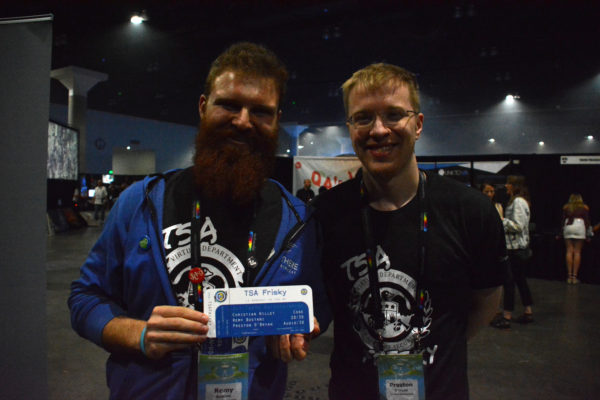
and proving abysmal at TSA duties.
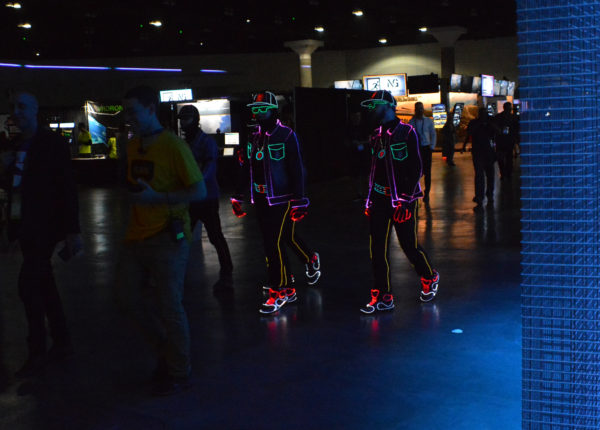
And very much looking forward to coming back to VRLA, next year.

